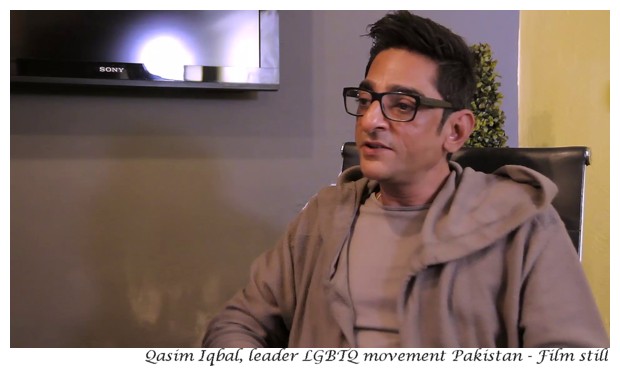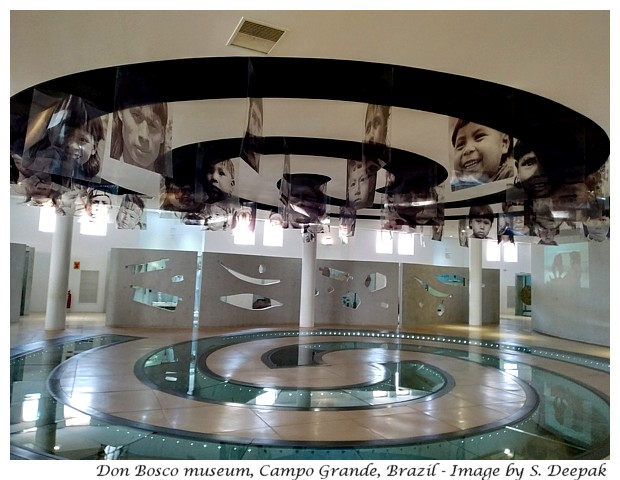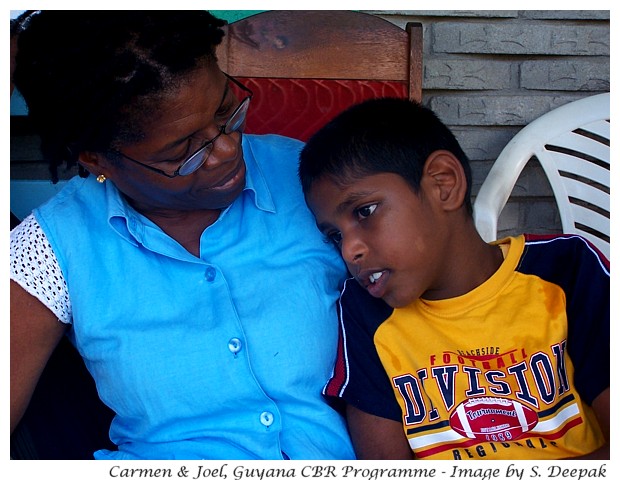Theme of Allah Loves Equality
The film looks at what it means to be a person of alternate sexuality or a LGBTQ person in Pakistan today. It starts with some examples of more accepting views towards alternate sexualities, especially towards cross-dressing, gay men and transgender women, in early Islamic society and in the Indian subcontinent, even during the Mughal period.The film moves between 3 main strands -
(1) The traditional communities of transgender women (Khawaja Sira or Hijra communities) and their accepted roles in the mainstream society;
(2) The struggles of gay persons (and a few lesbian persons) to live their sexual identities and their difficulties of coming out of clandestinity;
(3) The efforts of a few NGOs fighting for the rights of LGBTQ persons.
Moving between these 3 strands, the film explores their challenges, alliances and solidarities, as well as, what it means to live the porous and dynamic boundaries of different queer identities in contemporary Pakistan.
The violent reactions of a conservative patriarchal society are shown through a few social media and news clips. There is the vivid story of Alisha, a transgender woman, shot 6 times, forced to wait in the hospital because they could not decide if she should be treated as a man or as a woman and in the end, treated in the corridor of the male ward, in front of the lavatory, till her death.
The fear of violence is omnipresent in the film, expressed in the furtive gestures and anxious glances of film's testimonies. Bubbly, the guru/matriarch of a traditional Khawaja sira community, explains the importance of her traditional role in a soft and gentle voice - there is no other safe space, no space where you can find friendship and support outside their confines. She is reassuring and yet frightening because she underlines the perils of being an individual on your own in a society which does not accept you and can easily kill you.
The fear of violence is omnipresent in the film, expressed in the furtive gestures and anxious glances of film's testimonies. Bubbly, the guru/matriarch of a traditional Khawaja sira community, explains the importance of her traditional role in a soft and gentle voice - there is no other safe space, no space where you can find friendship and support outside their confines. She is reassuring and yet frightening because she underlines the perils of being an individual on your own in a society which does not accept you and can easily kill you.
Bubbly Malik has created a NGO called Wajood (Identity) for safeguarding the rights of transgender persons in Pakistan. She says "To live in a Daire Dari, the traditional home of Khwaja, you have to accept its rules. You get the love and support of a family but you must obey its rules."
Anaya Sheikh a young transgender stand-up comedian or Hannan Siddique, a well-known gay make-up artist, talk about the difficulties of living their sexual identities. Anaya can only be safe as a part of the Khwaja Sira and Hannan must wait for his companion, who is under family pressure to get married.
Anaya Sheikh a young transgender stand-up comedian or Hannan Siddique, a well-known gay make-up artist, talk about the difficulties of living their sexual identities. Anaya can only be safe as a part of the Khwaja Sira and Hannan must wait for his companion, who is under family pressure to get married.
The crowd of young men dancing with joy in a private gay party or the transgender woman dancing at a home accompanied by a traditional musician are both facets of the same reality.
The lesbian women are a hidden world, briefly mentioned in the documentary for the violence they must face. "They can't even accept that lesbians exist here. To accept that would mean that women have a sexuality. So many women in rural areas are circumcised, they can't be allowed to have a sexuality."
In the film one person says, "It is better to have the traditional identity of Hijra or Khwaja Sira, it has a role in the society and it keeps us safe. Calling ourselves gay or transgender exposes us to violence." However, as Khwaja Sira, the opportunities for living are limited - you can beg or dance during marriages and births or sell your body for sex. There are no other options.
The NGOs, even if they are talking about HIV screening and prevention, need to be careful in what they say and how they are perceived. The film explains the efforts of Qasim Iqbal, who is considered the father of the movement for the LGBTQ rights in Pakistan.
The lesbian women are a hidden world, briefly mentioned in the documentary for the violence they must face. "They can't even accept that lesbians exist here. To accept that would mean that women have a sexuality. So many women in rural areas are circumcised, they can't be allowed to have a sexuality."
In the film one person says, "It is better to have the traditional identity of Hijra or Khwaja Sira, it has a role in the society and it keeps us safe. Calling ourselves gay or transgender exposes us to violence." However, as Khwaja Sira, the opportunities for living are limited - you can beg or dance during marriages and births or sell your body for sex. There are no other options.
The NGOs, even if they are talking about HIV screening and prevention, need to be careful in what they say and how they are perceived. The film explains the efforts of Qasim Iqbal, who is considered the father of the movement for the LGBTQ rights in Pakistan.
If you wish to contact Wajahat Kazmi and to organise screening of this film, you can contact him through his website.
Conclusions
The parts of the film about Khwaja sira community reminded me of my (limited) interactions with the Hijra and Kinnar communities in India. Though many of the prejudices faced by persons with alternate sexualities are similar in India and Pakistan, I think that in India the LGBTQ world is much more ahead in raising their concerns and sharing their ideas.The film does not talk of transgender men and other queer groups, showing that probably these groups are without voices in Pakistan and were not available to share insights about their lives in the film.
A few years ago, Wajahat did his coming out as a gay person and has been very active on social media in promoting the rights of young persons, especially Muslims, to live their sexuality without fear or repression. There was a period when I was worried that some radical Islamist group will kill him.
I can imagine that making "Allah loves equality" and shooting in Pakistan for this film could not have been easy. It is a hard-hitting film and shows aspects of alternate sexualities in Pakistan that are usually hidden from public gaze. Allah may love equality but some of his people do not love it. Wajahat has a long fight ahead of him, his film is a courageous step in that direction.
Film credits:
Made by Il Grande Colibri, 2019, duration 55 min., produced by Elena de Piccoli, Michele Benini and Pier Cesare Notaro, directed by Wajahat Abbas Kazmi
*****
#lgbt #documentaryfilm #alternatesexualities #pakistan #lgbtpakistan












































